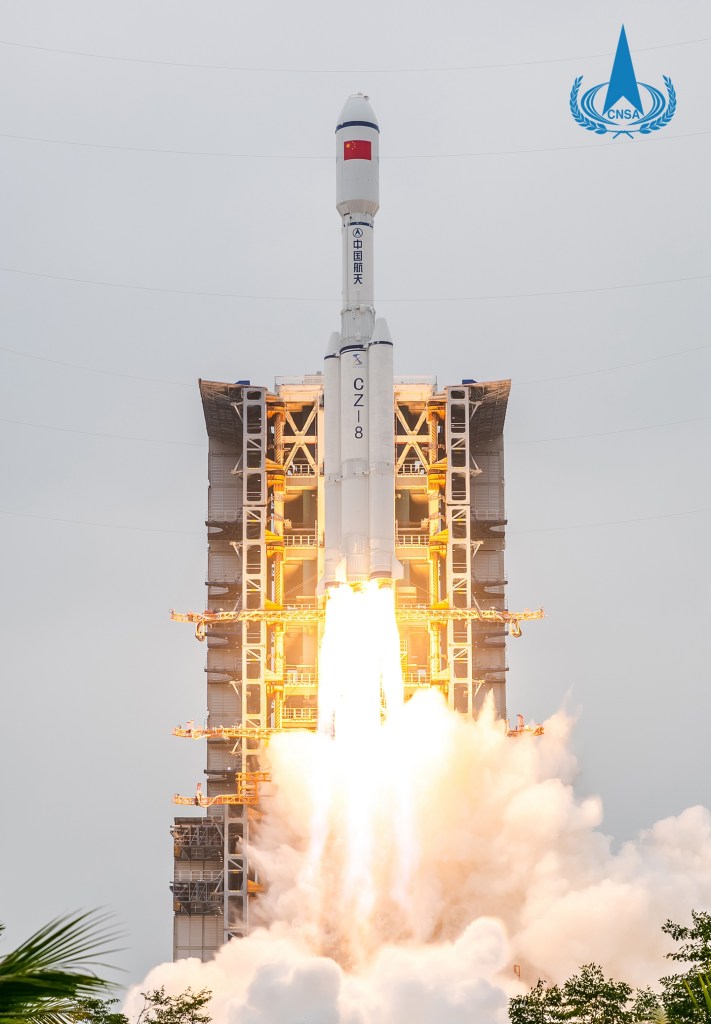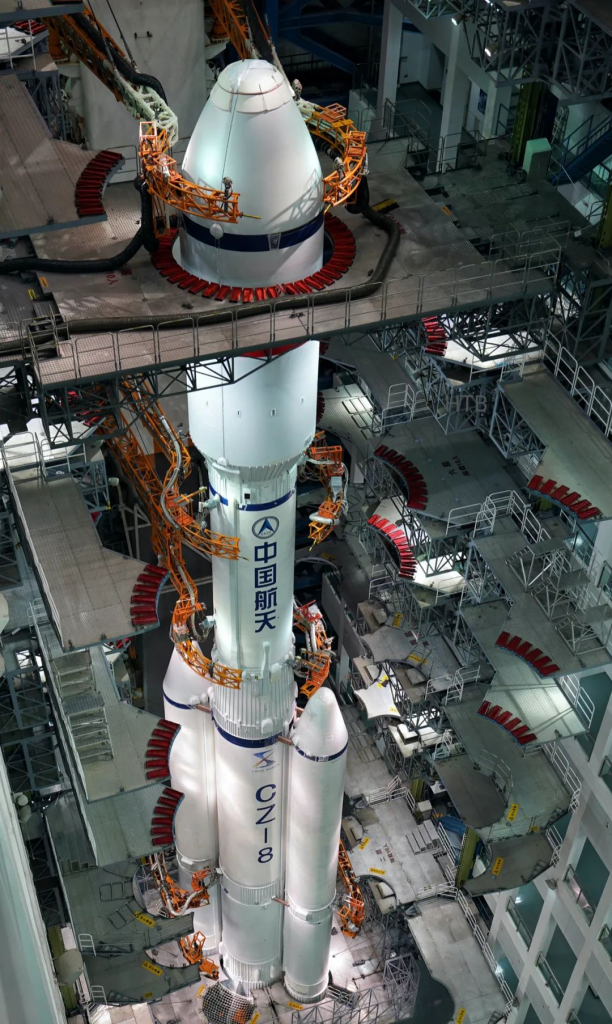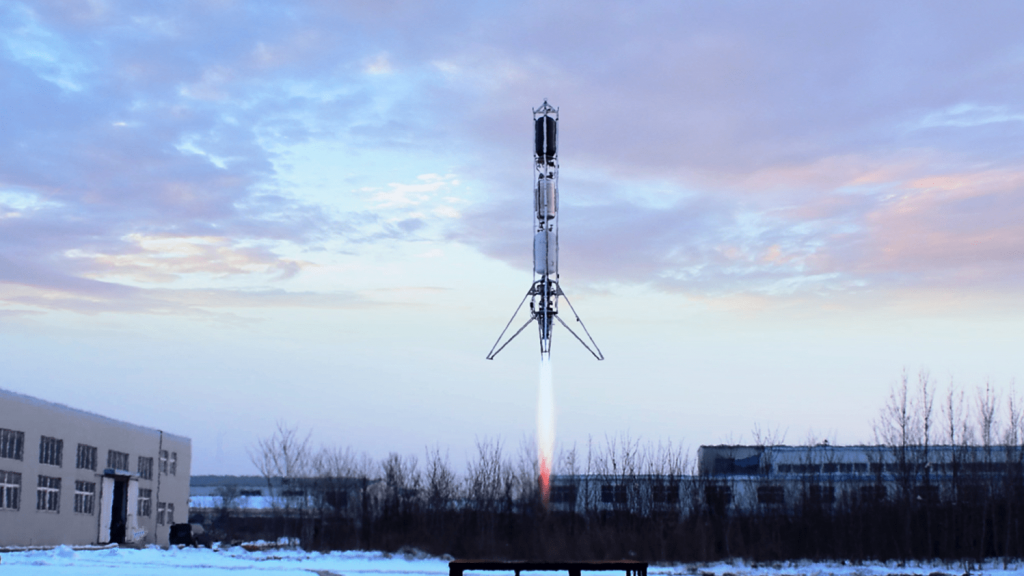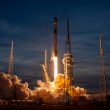Featured image credit: CASC
Check out our post launch review of this mission here.
Launch Window | February 27, 2021 – 01:30:00 – 06:30:00 UTC | 09:30:00 – 14:30:00 BJT |
|---|---|
Mission Name | Hainan-1 to 4 and Others, a rideshare mission |
Launch Provider | China Aerospace Science and Technology Corporation (CASC) |
Customer | The China Great Wall Industry Corporation (CGWIC) for Chinese space companies |
Rocket | Long March 8 Y-2 |
Launch Location | LC-201, Wenchang Spacecraft Launch Site, Wenchang, Hainan, China |
Payload mass | 2,600 kg (5,700 lb) |
Where are the satellites going? | Sun-synchronous orbit (SSO) |
Will they be attempting to recover the first stage? | Not on this mission |
Where will the first stage land? | It will crash back into the ocean in the South China Sea |
Will they be attempting to recover the fairings? | No |
Are these fairings new? | Yes |
How’s the weather looking? | TBD |
This will be the: | – 2nd flight of the Long March 8 – 2nd “Long March Express” rideshare mission for commercial payloads – 20th orbital launch attempt of 2022 |
Where to watch | Once available, an official livestream will be listed here |
What Does All This Mean?
China Aerospace Science and Technology Corporation (CASC) is launching a designed-for-reuse Long March 8 rocket for the second time. This rideshare mission will carry 22 satellites for Chinese commercial space companies, including optical and radar Earth observation satellites. If the mission succeeds, it will set a domestic record for the most satellites launched by a single Chinese rocket.
Hainan-1 to 4 And Others Mission
The China Great Wall Industry Corporation (CGWIC) is responsible for arranging this launch. Among the payload will be two Hainan-1 satellites, ten Jilin-1 optical Earth observation satellites for Chang Guang Satellite Technology, and others.
Hainan-1
This mission will give a start to the Hainan Earth-Observation Satellite Constellation System placing two Hainan-1 satellites into orbit. These satellites were developed by the Aerospace Information Research Institute (AIR) under the Chinese Academy of Sciences (CAS). According to the chief designer Yang Tianliang, each of them has a mass of 50 kg (200 kg total) and will be operating in a low-Earth orbit at an altitude of 500 km, with an orbiting speed of 28,440 km per hour. The satellites are equipped with an automatic identification system that can receive position, course, and speed data sent by a device on moving vessels.
The Hainan 1-01 has a wide-angle camera and will be identifying and tracking vessels on the sea, while the Hainan 1-02 carries a high-definition camera and will be observing ports, islands, and ships. The Hainan 1-03 and Hainan 1-04 , in turn, will use wide-angle cameras to map areas of interest.
The 10-satellite constellation will be completed in the coming 2-3 years, which will allow monitoring all of the South China Sea in real time.
Jilin-1
Moreover, the Hainan-1 to 4 and Others mission will add ten Jilin-1 satellites to the Jilin-1 constellation of remote sensing satellite sensors. These are high-resolution video imaging satellites that collect data for various mapping applications.
Other Payload
Out of 12 other satellites flying on the Hainan-1 to 4 and Others mission, five were manufactured by MinoSpace, a private satellite company. Among them are the Xidian-1 hyperspectral remote sensing satellite for the new Silk Road Tiantu constellation, the Wenchang-1 (01) and (02) wide-field multispectral satellites, the Taijing-3 (01) optical, and Taijing-4 (01) synthetic aperture radar (SAR) satellites.
Spacety, a company specialized in small satellites and satellite-based services, has two satellites being launched on this mission: the Chaohu-1 satellite for the Tianxian SAR constellation and the Thor Smart Satellite. Moreover, this mission will carry the Tianqi-19, the Star Era-17, and the Phospherus-1 optical satellite developed by Wuhan University for hyperspectral imaging.
What Is Long March 8?
The Long March 8 is China’s first venture into orbital-class medium-lift reusable rockets. It is designed to replace the Long March 2 and Long March 3 rockets that use hypergolic fuels for their first stages. The rocket is capable of placing around 4.5 tons of payload to a Sun-synchronous orbit with an altitude of 700 km (435 miles). The Long March 8 Y-2 rocket consists of a center core and an upper stage and, compared to the first version (Y-1), lacks two side boosters.

The Long March 8 is 50.3 meters (165 feet) long, with a takeoff weight of 356 tonnes when launched with two side boosters. Its maiden flight took place on December 22, 2020. The Long March 8 Y-2 rocket was manufactured in Tianjin and then was shipped to Hainan island in the South China Sea. The rocket takes off from the island facility at Wenchang in Hainan province. Therefore, it flies out over the ocean and there is no chance of the boosters landing on villages.

Long March 8 Center Core
The center core, known as K3, has two YF-100 engines. It uses RP-1 for fuel and LOx as an oxidizer. It is 25.1 m (82.3 ft) tall and 3.35 m (11 ft) wide.
Unlike any other Chinese rocket beforehand, the center core is designed to have four landing legs. It will also have grid fins to be used when re-entering the atmosphere and landing vertically.
The core stage is based on the Long March 7, which first flew in 2016. However, the engine will be adjusted to permit throttling and restart capabilities. The engines have a specific impulse of 300 seconds at sea level and 335 seconds in a vacuum.
Long March 8 Second Stage
This stage is based on the second stage for the Long March 3A rocket, which uses LH2/LOx. It has two YF-75 engines on board. The stage is 12.4 m (82.3 ft) long and 3.0 m (9.8 ft) wide. The engines have a specific impulse of 438 seconds in a vacuum.
Reusability
This is not the first exploration of reusable rockets in China. A private company, Linkspace, has been carrying out demonstration flights with vertical landing capabilities. Moreover, they are developing an orbital-class vehicle called NEWLINE-1.

The Long March 8, however, is the first orbital-class vehicle designed for reuse. The side boosters will not separate from the center core after they finish burning. Instead, the center core will return to the launch site and will in the future deploy four landing legs, just like the Falcon 9.
The first truly reusable version of the Long March 8 rocket is expected to fly in 2025.
Rocket section adapted from Andy Law






why it say core only? are there not going to be any boosters?
Yes. LM8 Y-1 has 2 boosters, but Y-2 has no boosters.